ASRock X58 Extreme3: An Enthusiast X58 Motherboard at a Budget Price?
by Ian Cutress on June 2, 2010 4:10 PM EST- Posted in
- Motherboards
- Intel
- ASRock
- X58
ASRock have gone down a pseudo-Gigabyte route in terms of board colour, opting for a blue and white component combination like Gigabyte, but on a black PCB. The main thing you will notice on the board is a fan on the tall FET heatsink next to the CPU, which is connected to the northbridge via a heatpipe. It's not common to see vendors provide a fan for this section of the motherboard, although we suppose ASRock are including it to keep FET and Northbridge temepratures within bounds during overclocked scenarios. The fan itself is barely audible above other GPU and CPU fans, and keeps the area cool in our overclocked scenario, even if the northbridge is warm and despite the heatpipe connecting the two.
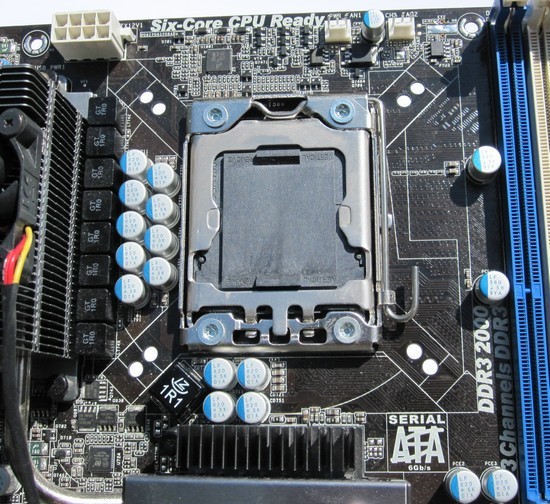
The socket area is relatively similar to other boards in the range - we had no such issues installing an Akasa Nero or a Corsair H50-1. However, the tall FET cooler will limit large coolers, such as the Prolimatech Armageddon, to one orientation only. The 'Combo Cooler Option' (ASRock marketing language for having holes for both 775 and 1366 coolers) is a nice addition to this area of the board, as mentioned previously.
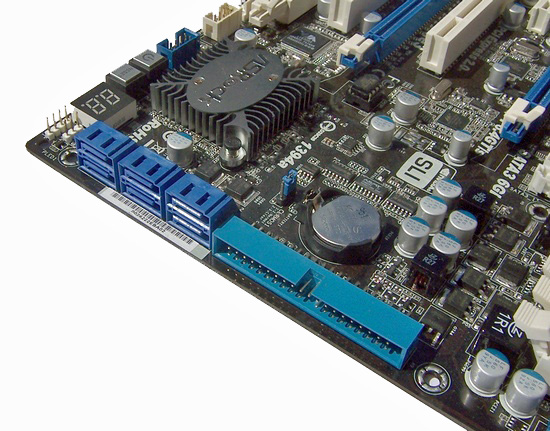
The SATA 3Gb/s ports are found at right angles to the board, so as not to disrupt any long PCIe cards used. Next to it is an IDE connector port, which despite hardware advances, is still in use today, even on enthusiast platforms. The same thing applies to the floppy port - a lot of industrial machinery still outputs data onto the floppy, so a workstation based on an enthusiast motherboard should be able to cope. However, the floppy drive connector is well out of the way, making it hard to reach should you need it. Where it would normally be, i.e. above the IDE port, is the system panel connectors and a USB header. It seems odd to put the system panel up in this area - most cases are designed to place the system panel in the bottom right hand side of the PCB.
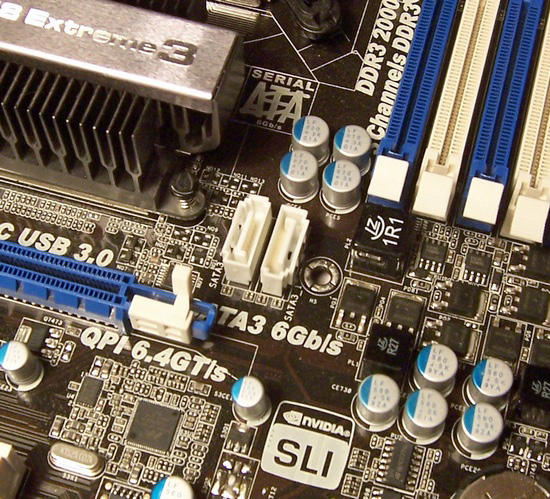
The SATA 6Gb/s ports are straight in the middle of the board. This is relatively absurd. As a result, SATA cables with either be stretching over RAM or graphics cards/power cables to get where they need to go - there is no cable management system in the word which will get around these issues.

Power and Reset buttons are starting to become a standard on boards designed for overclockable platforms, and the Extreme3 does not disappoint. Next to these two is a Debug LED, giving a two character hexadecimal code as the board boots up, and handy when dealing with support on a boot up issue.
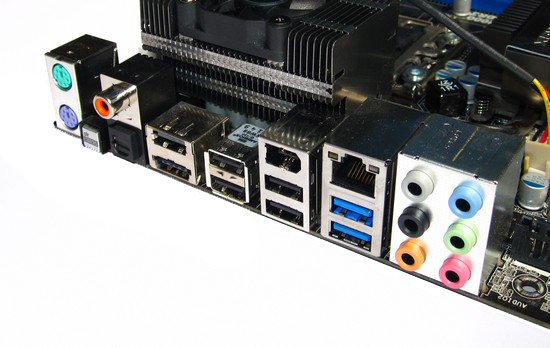
The back panel contains (from left to right) mouse and keyboard PS2 ports, a CLR CMOS button, coaxial and optical SPDIF, connections, a combined eSata 6Gb/s/USB2 port, five other USB2 ports, an IEEE 1394 FireWire port, two USB3 ports, a Realtek Gigabit LAN port, and the usual array of audio ports. While a board on an enthusiast socket may suggest dual LAN ports, given the budget end of the platform this board is aimed at, one LAN port seems fair. Despite the legacy nature of other parts of the board (such as the floppy and IDE connector), no serial or parallel ports are given on the Extreme3.


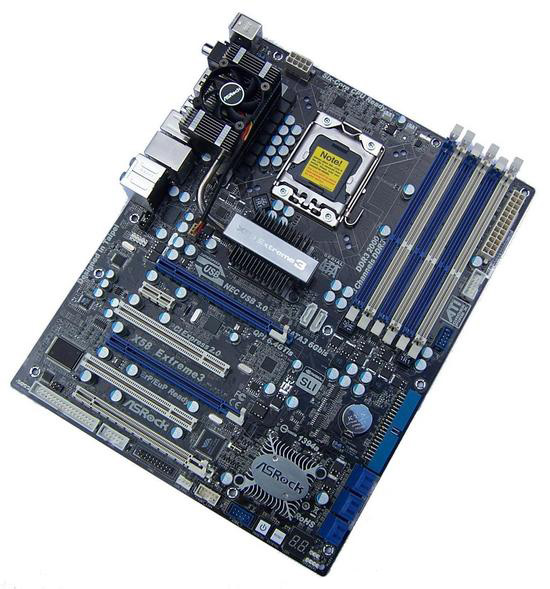








35 Comments
View All Comments
Zap - Friday, June 4, 2010 - link
How is the RMA process for ASRock, anyways? ASRock's site says to obtain RMA through your vendor, but what if the vendor has only a 30 day policy (like Newegg)?Nimiz99 - Thursday, June 3, 2010 - link
Great review and I loved your OC push on this board. Thank you.I was hoping to see a graph that shows 5 MoBo's (the top 2 or 3 with 1 or 2 boards in the same market segment as the one being reviewed) and what OC they achieved on the same D0 stepping chip that you have to see which MoBo performs best for the $ or in absolute. I know on a previous review for one of the Elite boards (300 to 500 dollar category) y'all actually compared the OC of three boards. To see that comparison is quite refreshing and putting in graphical form would be a welcome addition to an other-wise superb review.
I could envision the graph (or table for compactness) as such:
MoBo | Price (Bar with possible Label)
Name1 |$325 ----- 4.21 GHz
Name2 |$175 ---- 4.15 GHz
Name3 |$225 --- 4.12 GHz
ThisBoard|$190 ---4.10 GHz
SameMrkt |$180 -- 3.95 GHz
thanks - great review
jonup - Thursday, June 3, 2010 - link
I like your thinking!WRI - Sunday, June 6, 2010 - link
Active fan on the board is trash. Those cheeseball threepenny fans make noise, collect dust and quit before any other component. Start a collection of replacements to add to your junk drawer.howmoney - Friday, June 11, 2010 - link
best buy com hardwarehttp://www.com-hardware.com